Batting average .325 Inducted 1955 Hits 2,214 Vote 88.84% (third ballot) | Home runs 361 Name Joe DiMaggio Runs batted in 1,537 Role Baseball player | |
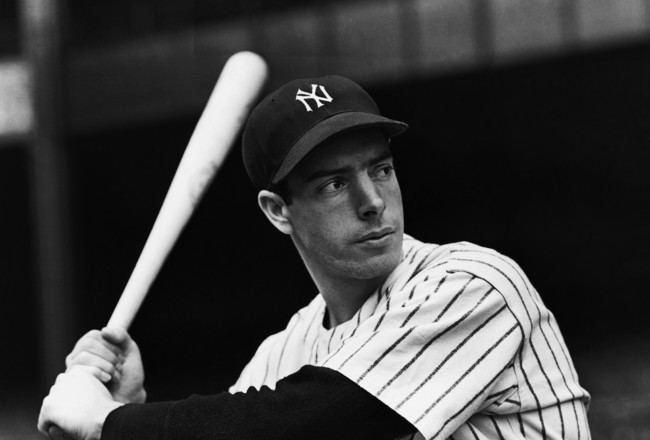 | ||
Siblings Dom DiMaggio, Vince DiMaggio Parents Giuseppe DiMaggio, Rosalia DiMaggio Similar People | ||
Joe dimaggio baseball hall of fame biographies
Joseph Paul DiMaggio (November 25, 1914 – March 8, 1999), nicknamed "Joltin' Joe" and "The Yankee Clipper", was an American Major League Baseball center fielder who played his entire 13-year career for the New York Yankees. He is perhaps best known for his 56-game hitting streak (May 15 – July 16, 1941), a record that still stands.
Contents
- Joe dimaggio baseball hall of fame biographies
- Joe dimaggio biography life and career of baseball s yankee clipper
- Early life
- Major league career
- Hitting streak
- Wartime
- Parents as enemy aliens
- Dorothy Arnold
- Marilyn Monroe
- Advertising
- Death
- Legacy
- In popular culture
- Art
- Comicsgraphic novels
- Literature
- Music
- Movies
- TV movies
- Theater
- Television
- Video games
- References
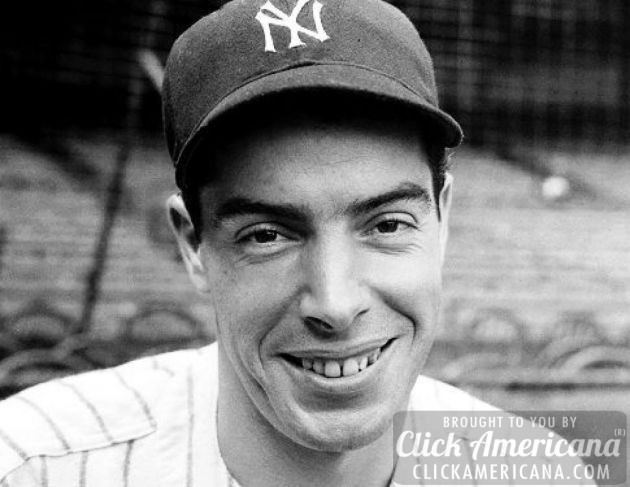
DiMaggio was a three-time MVP winner and an All-Star in each of his 13 seasons. During his tenure with the Yankees, the club won ten American League pennants and nine World Series championships.
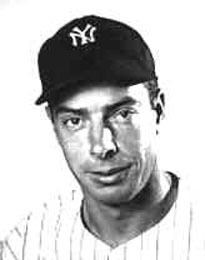
At the time of his retirement, he ranked fifth in career home runs (361) and sixth in career slugging percentage (.579). He was inducted into the Baseball Hall of Fame in 1955, and was voted the sport's greatest living player in a poll taken during the baseball centennial year of 1969.

His brothers Vince (1912–1986) and Dom (1917–2009) also were major league center fielders.
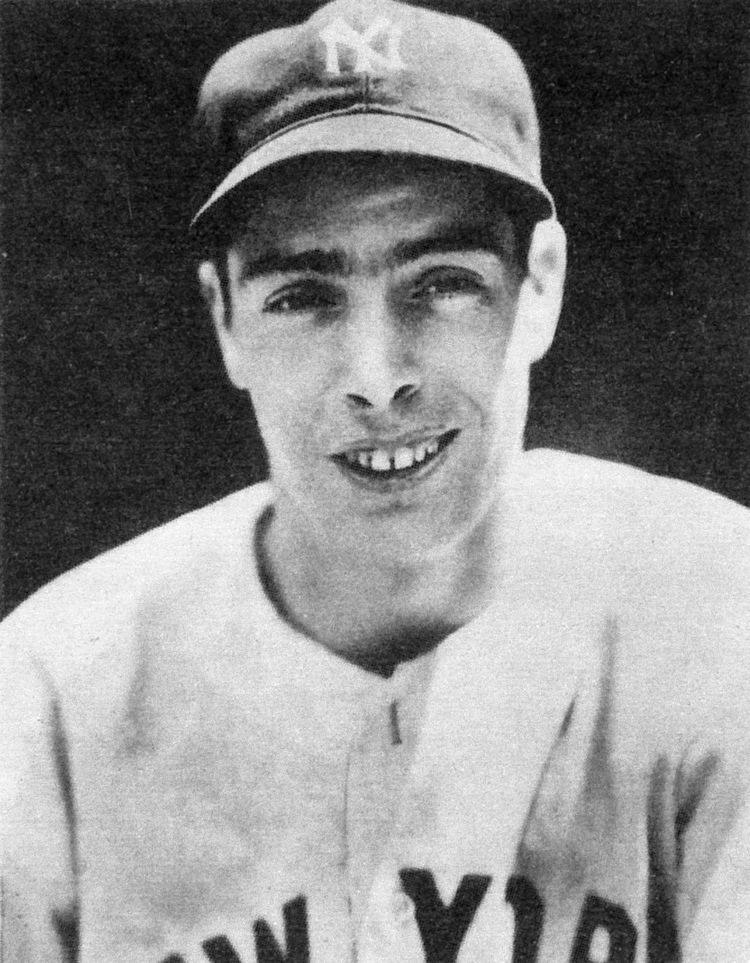
DiMaggio is also widely known for his marriage and lifelong devotion to Marilyn Monroe.

Joe dimaggio biography life and career of baseball s yankee clipper
Early life
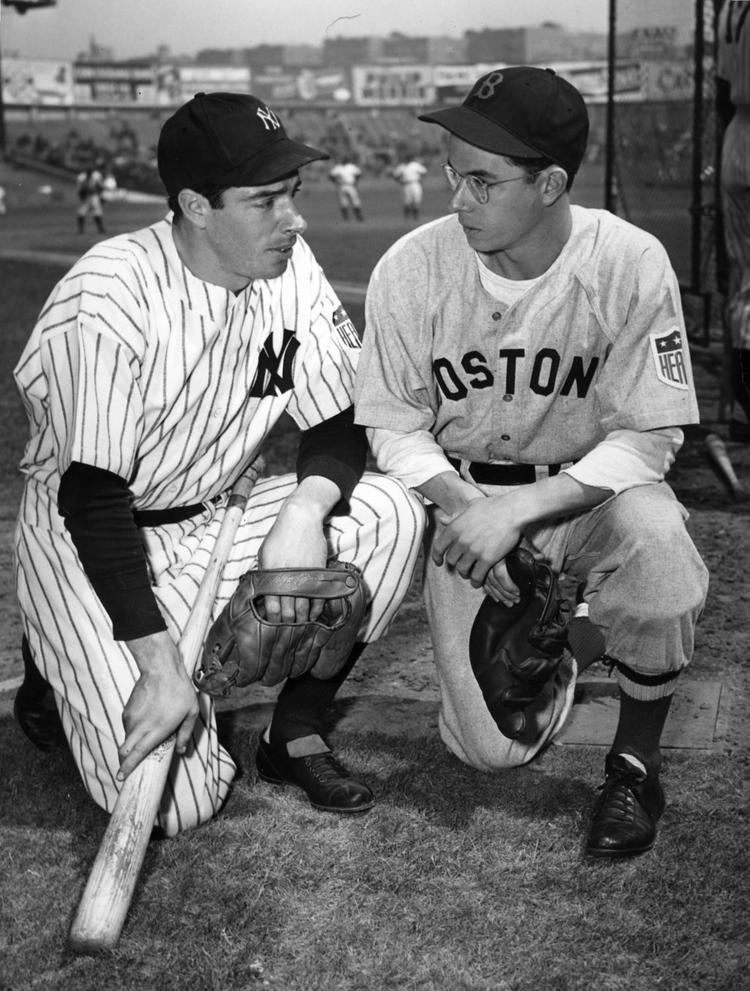
DiMaggio was born on November 25, 1914 in Martinez, California, the eighth of nine children born to Italian immigrants Giuseppe (1872–1949) and Rosalia (Mercurio) (1878–1951) DiMaggio, from Sicily. He was named Paolo after his father Giuseppe's favorite saint, Saint Paul. The family moved to nearby San Francisco when Joe was a year old.

Giuseppe was a fisherman, as were generations of DiMaggios before him. According to statements from Joe's brother Tom to biographer Maury Allen, Rosalia's father wrote to her with the advice that Giuseppe could earn a better living in California than in their native Isola delle Femmine, a northwestern Sicilian village in the province of Palermo.

After being processed on Ellis Island, Giuseppe worked his way across America, eventually settling near Rosalia's father in Pittsburg, California, on the east side of the San Francisco Bay Area. After four years, he earned enough money to send to Italy for Rosalia and their daughter, who was born after he had left for the United States.
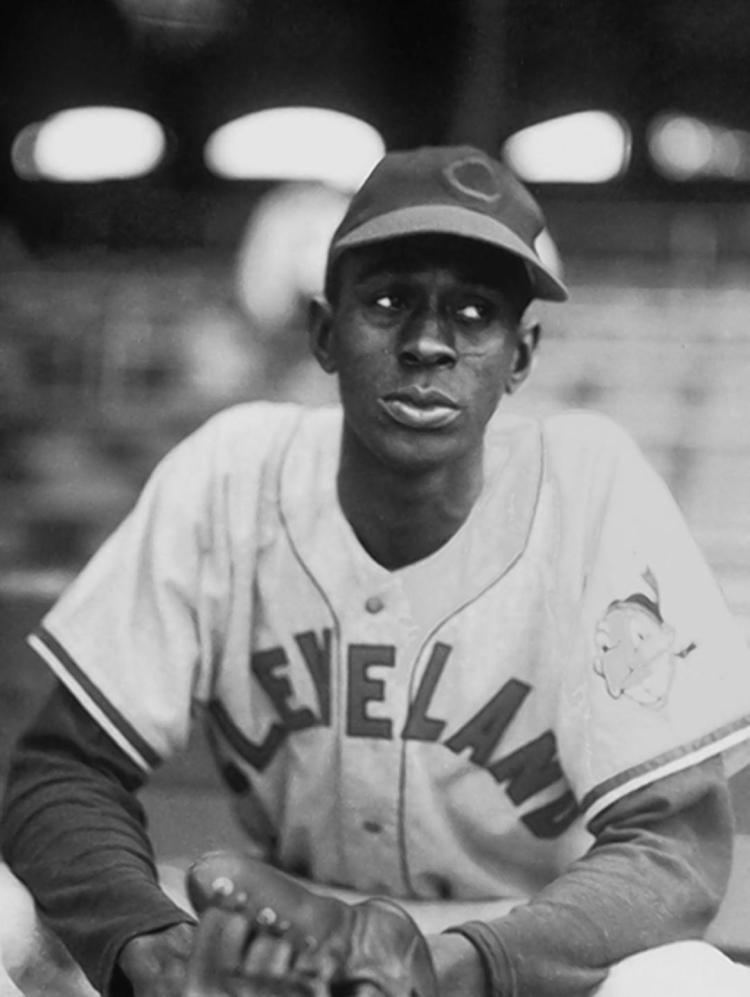
Giuseppe hoped that his five sons would become fishermen. DiMaggio recalled that he would do anything to get out of cleaning his father's boat, as the smell of dead fish nauseated him. Giuseppe called him "lazy" and "good-for-nothing." DiMaggio did not finish his education at Galileo High School and instead worked odd jobs including hawking newspapers, stacking boxes at a warehouse and working at an orange juice plant.

DiMaggio was playing semi-pro ball when older brother Vince DiMaggio, playing for the San Francisco Seals of the Pacific Coast League (PCL), talked his manager into letting DiMaggio fill in at shortstop. Joe DiMaggio made his professional debut on October 1, 1932. From May 27 to July 25, 1933, he hit safely in 61* consecutive games, a PCL-record, and second-longest in all of Minor League Baseball history. "Baseball didn't really get into my blood until I knocked off that hitting streak," he said. "Getting a daily hit became more important to me than eating, drinking or sleeping."

In 1934, DiMaggio suffered a career-threatening knee injury when he tore ligaments while stepping out of a jitney. Scout Bill Essick of the New York Yankees, convinced that the injury would heal, pestered his club to give him another look. After DiMaggio passed a physical examination in November, the Yankees purchased his contract for $50,000 and five players. He remained with the Seals for the 1935 season and batted .398 with 154 runs batted in (RBIs) and 34 home runs. His team won the 1935 PCL title, and DiMaggio was named the league's Most Valuable Player.
Major league career
DiMaggio made his major league debut on May 3, 1936, batting ahead of Lou Gehrig. The Yankees had not been to the World Series since 1932, but they won the next four Fall Classics. Over the course of his 13-year Major League career, DiMaggio led the Yankees to 9 World Series championships.
DiMaggio set a franchise record in 1936 by hitting 29 home runs in his rookie season. DiMaggio accomplished the feat in 138 games. His record stood for over 80 years until it was broken by Aaron Judge, who hit the 30th home run in his rookie season in his 84th game in 2017.
In 1939, DiMaggio was nicknamed the "Yankee Clipper" by Yankee's stadium announcer Arch McDonald, when he likened DiMaggio's speed and range in the outfield to the then-new Pan American airliner.
DiMaggio was pictured with his son on the cover of the inaugural issue of SPORT magazine in September 1946.
In 1947, Boston Red Sox owner Tom Yawkey and Yankees GM Larry MacPhail verbally agreed to trade DiMaggio for Ted Williams, but MacPhail refused to include Yogi Berra.
In the September 1949 issue of SPORT, Hank Greenberg said that DiMaggio covered so much ground in center field that the only way to get a hit against the Yankees was "to hit 'em where Joe wasn't." DiMaggio also stole home five times in his career.
On February 7, 1949, DiMaggio signed a contract worth $100,000 ($1,007,000 in current dollar terms) ($70,000 plus bonuses), and became the first baseball player to break $100,000 in earnings. By 1950, he was ranked the second-best center fielder by the Sporting News, after Larry Doby. After a poor 1951 season, a scouting report by the Brooklyn Dodgers that was turned over to the New York Giants and leaked to the press, and various injuries, DiMaggio announced his retirement at age 37 on December 11, 1951. When remarking on his retirement to the Sporting News on December 19, 1951, he said:
I feel like I have reached the stage where I can no longer produce for my club, my manager, and my teammates. I had a poor year, but even if I had hit .350, this would have been my last year. I was full of aches and pains and it had become a chore for me to play. When baseball is no longer fun, it's no longer a game, and so, I've played my last game.
Through May 2009, DiMaggio was tied with Mark McGwire for third place all-time in home runs over the first two calendar years in the major leagues (77), behind Phillies Hall of Famer Chuck Klein (83), and Milwaukee Brewers' Ryan Braun (79). Through 2011, he was one of seven major leaguers to have had at least four 30-homer, 100-RBI seasons in their first five years, along with Chuck Klein, Ted Williams, Ralph Kiner, Mark Teixeira, Albert Pujols, and Ryan Braun. DiMaggio holds the record for most seasons with more home runs than strikeouts (minimum 20 home runs), a feat he accomplished seven times, and five times consecutively from 1937 to 1941. DiMaggio would likely have exceeded 500 home runs and 2,000 RBIs had he not served in the military.
DiMaggio might have had better power-hitting statistics had his home park not been Yankee Stadium. As "The House That Ruth Built", its nearby right field favored the Babe's left-handed power. For right-handed hitters, its deep left and center fields made home runs almost impossible. Mickey Mantle recalled that he and Whitey Ford witnessed many DiMaggio blasts that would have been home runs anywhere other than Yankee Stadium (Ruth himself fell victim to that problem, as he also hit many long flyouts to center). Bill James calculated that DiMaggio lost more home runs due to his home park than any other player in history. Left-center field went as far back as 457 ft [139 m], where left-center rarely reaches 380 ft [116 m] in today's ballparks. Al Gionfriddo's famous catch in the 1947 World Series, which was close to the 415-foot mark [126 m] in left-center, would have been a home run in the Yankees' current ballpark. DiMaggio hit 148 home runs in 3,360 at-bats at home versus 213 home runs in 3,461 at-bats on the road. His slugging percentage at home was .546, and on the road, it was .610. Expert statistician Bill Jenkinson made a statement on these statistics:
For example, Joe DiMaggio was acutely handicapped by playing at Yankee Stadium. Every time he batted in his home field during his entire career, he did so knowing that it was physically impossible for him to hit a home run to the half of the field directly in front of him. If you look at a baseball field from foul line to foul line, it has a 90-degree radius. From the power alley in left center field (430 in Joe's time) to the fence in deep right center field (407 ft), it is 45-degrees. And Joe DiMaggio never hit a single home run over the fences at Yankee Stadium in that 45-degree graveyard. It was just too far. Joe was plenty strong; he routinely hit balls in the 425-foot range. But that just wasn't good enough in cavernous Yankee Stadium. Like Ruth, he benefited from a few easy homers each season due to the short foul line distances. But he lost many more than he gained by constantly hitting long fly outs toward center field. Whereas most sluggers perform better on their home fields, DiMaggio hit only 41 percent of his career home runs in the Bronx. He hit 148 homers at Yankee Stadium. If he had hit the same exact pattern of batted balls with a typical modern stadium as his home, he would have belted about 225 homers during his home field career.
Joe became eligible for the Baseball Hall of Fame in 1953 but he was not elected until 1955. The Hall of Fame rules on the post-retirement induction waiting period had been revised in the interim, extending the waiting period from one to five years, but DiMaggio and Ted Lyons were exempted from the rule. DiMaggio told Baseball Digest in 1963 that the Brooklyn Dodgers had offered him their managerial job in 1953, but he turned it down. After being out of baseball since his retirement as a player, Joe became the first hitting instructor of the newly relocated Oakland Athletics from 1968 to 1970.
Hitting streak
DiMaggio's most famous achievement is his MLB record-breaking 56-game hitting streak in 1941. The streak began on May 15, 1941, a couple of weeks before the death of Lou Gehrig, when DiMaggio went one-for-four against Chicago White Sox pitcher Eddie Smith. Major newspapers began to write about DiMaggio's streak early on, but as he approached George Sisler's modern era record of 41 games, it became a national phenomenon. Initially, DiMaggio showed little interest in breaking Sisler's record, saying "I'm not thinking a whole lot about it... I'll either break it or I won't." As he approached Sisler's record, DiMaggio showed more interest, saying, "At the start I didn't think much about it... but naturally I'd like to get the record since I am this close." On June 29, 1941, DiMaggio doubled in the first game of a doubleheader against the Washington Senators at Griffith Stadium to tie Sisler's record and then singled in the nightcap to extend his streak to 42.
A Yankee Stadium crowd of 52,832 fans watched DiMaggio tie the all-time hitting streak record (44 games, Wee Willie Keeler in 1897) on July 1. The next day against the Boston Red Sox, he homered into Yankee Stadium's left field stands to extend his streak to 45, setting a new record. DiMaggio recorded 67 hits in 179 at-bats during the first 45 games of his streak, while Keeler recorded 88 hits in 201 at-bats. DiMaggio continued hitting after breaking Keeler's record, reaching 50 straight games on July 11 against the St. Louis Browns. On July 17 at Cleveland Stadium, DiMaggio's streak was finally snapped at 56 games, thanks in part to two backhand stops by Indians third baseman Ken Keltner. DiMaggio batted .408 during the streak with 15 home runs and 55 RBI. The day after the streak ended, DiMaggio started another streak that lasted 16 games. The distinction of hitting safely in 72 of 73 games is also a record. The closest anyone has come to equaling DiMaggio since 1941 is Pete Rose, who hit safely in 44 straight games in 1978. During the streak, DiMaggio played in seven doubleheaders. The Yankees' record during the streak was 41–13–2.
Some consider DiMaggio's streak a uniquely outstanding and unbreakable record and a statistical near-impossibility. Nobel Prize-winning physicist and sabermetrician Edward Mills Purcell calculated that, to have the likelihood of a hitting streak of 50 games occurring in the history of baseball up to the late 1980s be greater than 50%, fifty-two .350 lifetime hitters would have to have existed instead of the actual three (Ty Cobb, Rogers Hornsby, and Shoeless Joe Jackson). His Harvard colleague Stephen Jay Gould, citing Purcell's work, called DiMaggio's 56-game achievement "the most extraordinary thing that ever happened in American sports". Samuel Arbesman and Steven Strogatz of Cornell University disagree; they conducted 10,000 computer simulations of Major League Baseball from 1871 to 2005, 42% of which produced streaks as long or longer, with record streaks ranging from 39 to 109 games and typical record streaks between 50 and 64 games.
Wartime
DiMaggio enlisted in the United States Army Air Forces on February 17, 1943, rising to the rank of sergeant. He was stationed at Santa Ana, California, Hawaii, and Atlantic City, New Jersey, as a physical education instructor. He was released on medical discharge in September 1945, due to chronic stomach ulcers. Other than now being paid $21 a month, DiMaggio's service was as comfortable as a soldier's life could be. He spent most of his career playing for baseball teams and in exhibition games against fellow Major Leaguers and minor league players, and superiors gave him special privileges due to his prewar fame. DiMaggio ate so well from an athlete-only diet that he gained 10 pounds, and while in Hawaii he and other players mostly tanned on the beach and drank. Embarrassed by his lifestyle, DiMaggio requested that he be given a combat assignment but was turned down.
Parents as "enemy aliens"
Giuseppe and Rosalia DiMaggio, both from Isola delle Femmine, were among the thousands of German, Japanese, and Italian immigrants classified as "enemy aliens" by the government after the Attack on Pearl Harbor. Each was required to carry photo ID booklets at all times and were not allowed to travel outside a five-mile radius from their home without a permit. Giuseppe was barred from the San Francisco Bay, where he had fished for decades, and his boat was seized. Rosalia became an American citizen in 1944, followed by Giuseppe in 1945.
Dorothy Arnold
In January 1937, DiMaggio met actress Dorothy Arnold on the set of Manhattan Merry-Go-Round, in which he had a minor role, and she was an extra. They married at San Francisco's St. Peter and Paul Church on November 19, 1939, as 20,000 well-wishers jammed the streets. Their son, Joseph Paul DiMaggio III, was born at Doctors Hospital on October 23, 1941. The couple divorced in 1944.
Marilyn Monroe
According to her autobiography My Story, ghostwritten by Ben Hecht, Marilyn Monroe did not want to meet DiMaggio, fearing that he was a stereotypical arrogant athlete. They eloped at San Francisco City Hall on January 14, 1954.
The marriage ran into trouble within a few weeks as DiMaggio, the product of a strict Roman Catholic upbringing, became upset by Monroe's personal habits, including her disdain for bathing and her tendency to relax around the house nude. Although she suffered from endometriosis, Monroe and DiMaggio each expressed to reporters their desire to start a family.
An incident between the couple is supposed to have occurred immediately after the skirt-blowing scene in The Seven Year Itch that was filmed on September 14, 1954, in front of Manhattan's Trans-Lux 52nd Street Theater. Then 20th Century Fox's East Coast correspondent Bill Kobrin told the Palm Springs Desert Sun that it was director Billy Wilder's idea to turn the shoot into a media circus. The couple then had a "yelling battle" in the theater lobby. A month later, she contracted the services of celebrity attorney Jerry Giesler and filed for divorce on grounds of mental cruelty nine months after the wedding. After the failure of their marriage, DiMaggio underwent therapy, stopped drinking alcohol, and expanded his interests beyond baseball; he and Monroe read poetry together in their later years.
On August 1, 1956, an International News wire photo of DiMaggio with Lee Meriwether gave rise to speculation that the couple was engaged, but Cramer wrote that it was a rumor started by Walter Winchell. Monroe biographer Donald Spoto claimed that DiMaggio was "very close to marrying" 1957 Miss America Marian McKnight, who won the crown with a Marilyn Monroe act, but McKnight denied it. He was also linked to Liz Renay, Cleo Moore, Rita Gam, Marlene Dietrich, and Gloria DeHaven during this period and to Elizabeth Ray and Morgan Fairchild years later, but he never publicly confirmed any involvement with any woman.
DiMaggio reentered Monroe's life as her marriage to Arthur Miller was ending. On February 10, 1961, he secured her release from Payne Whitney Psychiatric Clinic. She joined him in Florida where he was a batting coach for the Yankees. Their "just friends" claim did not stop remarriage rumors from flying. Reporters staked out her Manhattan apartment building. Bob Hope "dedicated" Best Song nominee "The Second Time Around" to them at the 33rd Academy Awards.
According to Maury Allen's biography, DiMaggio was alarmed at how Monroe had fallen in with people he felt were detrimental to her well-being. Val Monette, owner of a military post-exchange supply company, told Allen that DiMaggio left his employ on August 1, 1962, because he had decided to ask Monroe to remarry him.
She was found dead in her Brentwood, Los Angeles, home on August 5 after housekeeper Eunice Murray telephoned Monroe's psychiatrist, Dr. Ralph Greenson. DiMaggio's son had spoken to Monroe on the phone the night of her death and claimed that she seemed fine. Her death was deemed a probable suicide by "Coroner to the Stars" Thomas Noguchi. It has also been the subject of conspiracy theories.
Devastated, DiMaggio claimed her body and arranged for her funeral at Westwood Village Memorial Park Cemetery, barring Hollywood's elite as well as members of the Kennedy family from attending. He had a half-dozen red roses delivered three times a week to her crypt for 20 years. He refused to talk about her publicly or otherwise exploit their relationship. He never married again. According to DiMaggio's attorney Morris Engleberg, DiMaggio's last words were: "I'll finally get to see Marilyn." However, Joe's brother Dominic challenged both Engelberg's version of Joe's final moments as well as his motives.
Advertising
In the 1970s, DiMaggio became a spokesman for Mr. Coffee and would be the face of the electric drip coffee makers for over 20 years. Vincent Marotta, the CEO of North American Systems, which manufactured Mr. Coffee at the time, recruited DiMaggio for the advertising campaign. DiMaggio's spots proved successful with consumers. In a 2007 interview with the Columbus Dispatch", Marotta joked that "millions of kids grew up thinking Joe DiMaggio was a famous appliance salesman." Despite his commercials for Mr. Coffee, Joe DiMaggio rarely drank coffee due to ulcers. However, when he did drink coffee, DiMaggio preferred Sanka instant coffee rather than the coffee brewed by Mr. Coffee machines.
In 1972, DiMaggio became a spokesman for The Bowery Savings Bank. With the exception of a five-year hiatus in the 1980s, DiMaggio regularly made commercials for the financial institution until 1992.
Death
DiMaggio, a heavy smoker for much of his adult life, was admitted to Memorial Regional Hospital in Hollywood, Florida, on October 12, 1998, for lung cancer surgery and remained there for 99 days. He returned to his Hollywood, Florida, home on January 19, 1999, where he died on March 8.
DiMaggio's funeral was held on March 11, 1999, at Sts. Peter and Paul Roman Catholic Church in San Francisco; he was interred at Holy Cross Cemetery in Colma, California. DiMaggio's son died the following August at age 57. A highway running alongside the Hudson River in Manhattan, New York, from the end of Lower Manhattan is named the Joe DiMaggio Highway. It runs for the entire way.
Legacy
At his death, The New York Times called DiMaggio's 1941 56-game hitting streak "perhaps the most enduring record in sports".
In an article in 1976 in Esquire magazine, sportswriter Harry Stein published an "All Time All-Star Argument Starter," consisting of five ethnic baseball teams. Joe DiMaggio was the center fielder on Stein's Italian team.
On September 17, 1992, the doors were opened at Joe DiMaggio Children's Hospital at Memorial Regional Hospital in Hollywood, Florida, for which he raised over $4,000,000.
On April 13, 1998, DiMaggio was given the Sports Legend Award at the 13th annual American Sportscasters Association Hall of Fame Awards Dinner in New York City. Dr. Henry Kissinger, former Secretary of State and a longtime fan of DiMaggio's, made the presentation to the Yankee great. The event was one of DiMaggio's last public appearances before taking ill.
Yankee Stadium's fifth monument was dedicated to DiMaggio on April 25, 1999, and the West Side Highway was officially renamed in his honor. The Yankees wore DiMaggio's number 5 on the left sleeves of their uniforms for the 1999 season. He is ranked No. 11 on The Sporting News' list of the 100 Greatest Baseball Players, and he was elected by fans to the Major League Baseball All-Century Team. In addition to his number 5 being retired by the New York Yankees, DiMaggio's number was also retired by the Florida Marlins, who retired it in honor of their first team president, Carl Barger, who died five months before the team took the field for the first time in 1993. DiMaggio had been his favorite player.
An auction of DiMaggio's personal items was held by the adopted daughters of DiMaggio's son in May 2006. Highlights included the ball hit to break Wee Willie Keeler's hitting-streak record ($63,250); his 2,000th career hit ball ($29,900); his 1947 Most Valuable Player Award ($281,750); the uniform worn in the 1951 World Series ($195,500); his Hall of Fame ring ($69,000); a photograph Marilyn autographed "I love you Joe" ($80,500); her passport ($115,000); and their marriage certificate ($23,000). Lot 758, DiMaggio's white 1991 Mercedes 420 SEL sedan, which was a gift from the New York Yankees commemorating the 50th anniversary of DiMaggio's 1941 season, sold for $18,000. The event netted a total of $4.1 million.
On August 8, 2011, the United States Postal Service announced that DiMaggio would appear on a stamp for the first time. It was issued as part of the "Major League Baseball All-Star Stamp Series," which came out in July 2012.
According to American geneticist Mary-Claire King in the spring of 1981, DiMaggio babysat her daughter at the San Francisco airport so Dr. King could drop her mother off to her flight to Chicago. According to Dr. King, if it were not for DiMaggio's kindness, she would have almost certainly missed her own flight that was taking her and her daughter to Washington, D.C., a trip that eventually resulted in Dr. King's getting her first major grant from the National Institutes of Health and the discovery of the breast and ovarian cancer-causing gene, BRCA1.
DiMaggio insisted on being introduced as the "Greatest Living Ballplayer" at events, including Yankee Old-Timers Day. Billy Crystal was once punched in the stomach for not introducing him as such.
In popular culture
DiMaggio's popularity during his career was such that he was referenced in film, television, literature, art, and music both during his career and decades after he retired.
